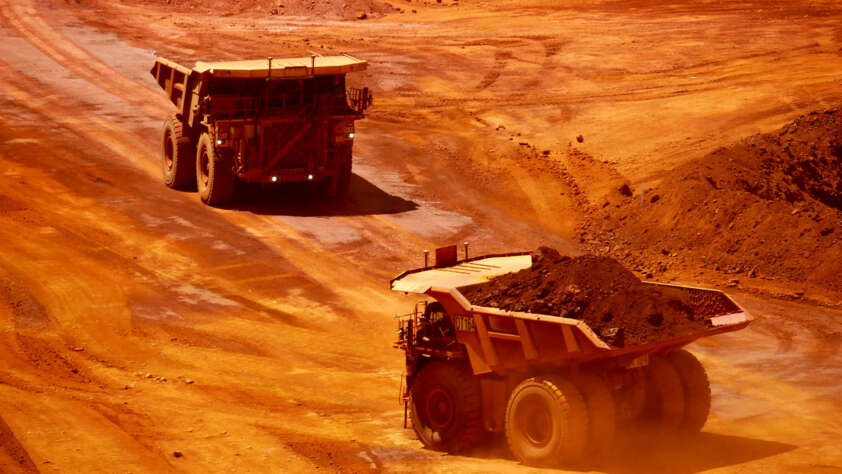The Federal Government has handed down a 2023-24 Budget which forecasts a surplus of $4.2 billion and higher than anticipated reductions to gross debt.
The Chamber of Minerals and Energy of WA (CME) Chief Executive Officer Rebecca Tomkinson said the significant contributions of the mining and resources sector had helped the Government deliver $14.6 billion in cost-of-living relief among other key budget measures.
“When commodity prices are high, Australia wins. The resources sector pays more than 30 per cent of Australia’s total company tax income to improve our nation’s budget bottom line,” she said.
“Commodities remain crucial to the prosperity of our economy and go hand-in-hand with the focus on further developing our critical minerals capabilities as the world continues to decarbonise in line with the Paris Agreement.”
Mining and resources make up 69 per cent of all Australian goods and services exported, up 3 per cent from the previous year.
Ms Tomkinson said that Western Australia played a leading role in every one of these export markets, reinforcing the view that the State is the engine room of the Australian economy.
Australian resource and energy exports are forecast to set a record of $464 billion in 2022–23, comprising:
Iron ore: $133 billion, with export volumes forecast to increase by 1.9% annually over the outlook period to 2028. Since the 2019 budget, higher-than-expected iron ore prices have primarily led to increased company tax receipts, growth in nominal GDP and supported Australia’s favourable terms of trade.
Oil and Gas: A combined $106 billion, with forecasted growth in global demand for both commodities through to 2028.
Gold: $25 billion, with production forecast to increase to a peak of 336 tonnes in 2024–25.
Critical Minerals: A combined total of more than $47 billion across aluminum, copper, nickel, uranium, zinc and lithium. Demand is also set to increase, with lithium alone forecast to triple its export earnings this year — from $5.3 billion in 2021–22 to $18.6 billion.
Ms Tomkinson welcomed the Government’s investment in Australia’s energy transformation and its commitment to establish Australia as a renewable energy superpower, with strong strategic industries in global supply chains.
“CME and its member companies are incredibly proud of the role that WA’s mining and resources sector plays in making a positive difference to people’s lives across the nation.
“There are a range of initiatives, announced both in the lead-up to the budget and tonight, which are a clear recognition of the critical role our commodities would play in a low carbon future.
“These include the $2 billion Hydrogen Headstart program, which aims to position Australia as a world leader in producing and exporting hydrogen power, as well as funding for the operations of the Critical Minerals Office and the development of a Future Gas Strategy.
“Measures announced in the budget will help build the sector’s workforce of the future and foster the use of new technologies to deliver lower emissions energy.”
However, Ms Tomkinson said governments will need to be prepared to do more to maximise these opportunities to ensure Australia realises its ambitions of becoming a renewable energy superpower.
“While the acknowledgement of the critical role commodities will play in this is welcome, there are few budget measures which will materially address the increasingly intense competition for global capital, stagnant productivity growth, and the increased costs and uncertainty flowing from cumulative impact of regulatory changes and persistent regulatory and administrative inefficiencies,” she said.
CME notes the budget also includes new revenue measures, namely the previously announced changes to the Petroleum Resources Rent Tax (PRRT). This measure is expected to generate an additional $2.4 billion in revenue and add to the already record levels of PRRT revenues, bringing the total forecast to be raised to $13.4 billion over the forward estimates.
“Western Australia’s energy industry is already a major economic contributor to both state and federal revenue, delivering billions to Federal and State governments through taxation measures and royalties,” Ms Tomkinson said.
“The Western Australian mining and resource sector provides tens of thousands of jobs, makes significant investments in local communities and has funded major infrastructure throughout the state.
“It is critical that governments continue to provide supportive fiscal and policy settings to secure future investment and ensure the long-term sustainability of these critical industries.”
Other significant announcements contained in the budget, or unveiled in the lead-up to it, and welcomed by the Western Australian mining and resources sector include:
- Housing (Build-To-Rent Developments) – Decrease receipts by $30 million and increase payments by $4.3 million over five years including increasing the capital works tax deduction depreciation rate from 2.5 to 4 per cent per year for eligible new build to rent projects.
- $80.5 million over 4 years from 2023–24 to support the Australian critical minerals sector to build diverse and competitive supply chains, attract international investment and transition to net zero.
- $2.2 million for Treasury to establish data analysis capabilities, to track foreign investment patterns and compliance in the critical minerals sector.
- $6.7 million to develop a Future Gas Strategy to support Australia’s energy system to reach 82 per cent renewables by 2030 and become cleaner, cheaper and more reliable while maintaining our international reputation as a trusted energy supplier to the region.
- Kimberley flood support, under a joint collaboration with the WA Government, to fund 20 positions under the Community and Industry Recovery Officer Program.



